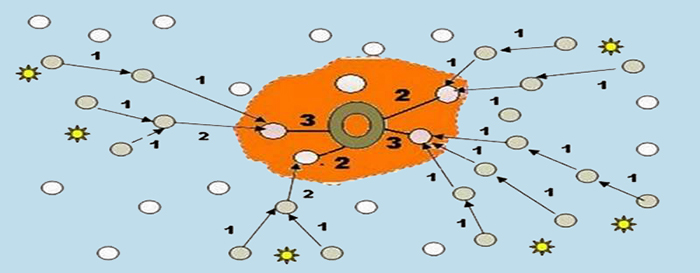
PhD Dissertation Defense
Physical- and MAC-Layer Mechanisms for Increasing
Base-Station Anonymity in Wireless Ad-hoc Networks
John Ward
10:00am Monday, 13 April 2015, ITE 325b, UMBC
Wireless ad hoc networks have become valuable assets to both the commercial and military communities with applications ranging from industrial control on a factory floor to reconnaissance of a hostile border. In most applications, data sources forward information over multi-hop paths to a base station (BS). The BS not only serves as the data sink, but also provides other basic control and management features such as protocol synchronization, a gateway to other networks, and operator failure notifications, without which the network becomes dysfunctional. The critical role of the BS makes it a natural target for an adversary that desires to achieve the most impactful attack on the network. Even if an ad-hoc network employs conventional security mechanisms such as encryption and authentication, an adversary may apply traffic analysis techniques to identify the BS. This motivates a significant need for achieving improved BS anonymity to conceal its identity, role, and location. Traffic analysis countermeasures found in the literature have focused on the link and network layers and little attention has been given to the physical-layer (PHY) approaches.
In this dissertation, we address the challenges of BS anonymity by developing PHY and Medium Access Control (MAC) traffic analysis countermeasures. We first consider the limitations associated with evidence theory, the adversary’s primary traffic analysis attack model. We analyze the susceptibility of evidence theory to imperfect received signal strength (RSS) measurements. Next we extend the standard evidence theory approach to consider the contribution of acknowledgements to BS anonymity. We call this approach Acknowledgement Aware Evidence Theory (AAET) and describe the adversary’s initial survey phase which is based on a novel message correlation approach. Accurate synchronization is required by an ad-hoc network to employ PHY countermeasures; however, synchronization represents a fundamental design tradeoff, since the low-cost nodes and conservation of energy limit the achievable accuracy of synchronization within the network. We consider the impact of two popular synchronization protocols, Reference Broadcast Synchronization (RBS) and Timing-Synch Protocol for Sensor Networks (TPSN) on BS anonymity.
We develop a novel PHY BS anonymity-boosting approach based on distributed beamforming, which we call Distributed Beamforming protocol for increased BS ANonymity (DiBAN). DiBAN is a protocol that includes a cross-layer relay selection algorithm that a node employs to determine the most appropriate number of helper relays to participate in distributed beamforming at each hop. While effective at increasing BS anonymity, the overhead associated with DiBAN is in addition to any overhead already associated with existing ad hoc network protocols. We refine DiBAN using cross-layer design methodology to create an integrated distributed beamforming protocol called Link and Physical Cross-layer design for increased Anonymity (LiPCA) that increases BS anonymity with minor additional overhead by taking advantage of the underlying services that the MAC already provides. We use simulation to demonstrate the anonymity performance and energy-efficiency of our approaches and use the popular Sensor MAC (S-MAC) protocol as an exemplar MAC protocol. Results show that the cross-layer design of our LiPCA protocol achieves equivalent anonymity performance to DiBAN, but with an energy savings of approximately 35 percent.
Committee: Drs. Mohamed Younis (Chair), Charles Nicholas, Richard Forno, Ryan Robucci and Pedro Rodriguez (JHU/APL)